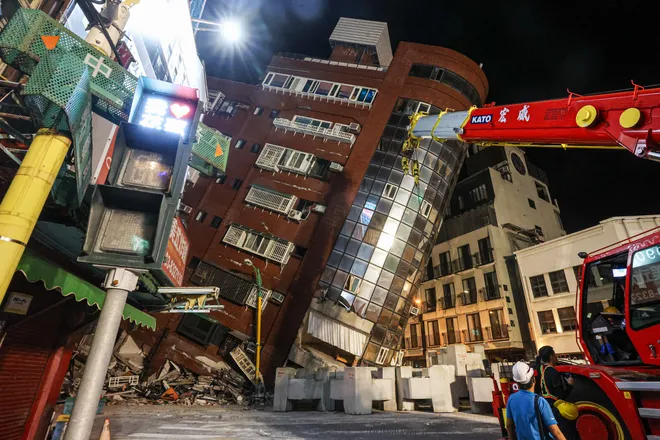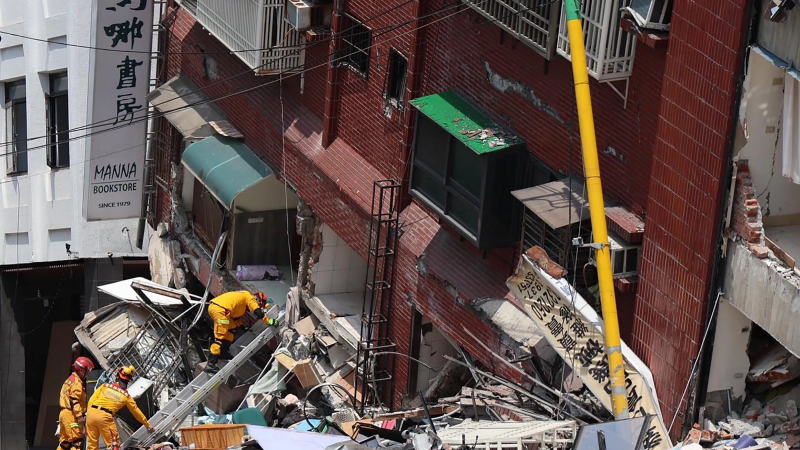Earthquakes happen all the time, you just can't feel them. A guide to how they're measured
About 55 earthquakes a day – 20,000 a year – are recorded by the National Earthquake Information Center. Most are tiny and barely noticed by people living where they happen. But some are strong enough to shake things off walls, cause cracks in foundations and, in the worst cases, bring entire buildings down.
How the strength of quakes is measured has changed over the years, so you'll see references to the Richter Scale, earthquake magnitude and intensity. Here's a quick primer on what they mean and – more importantly – what they feel like.
What does magnitude mean in an earthquake?
Magnitude is a measurement of the strength of an earthquake. Officially it's called the moment magnitude scale. It's a logarithmic scale, meaning each number is 10 times as strong as the one before it. So a 5.0 earthquake is ten times stronger than a 4.0.
The magnitude and effect of an earthquake, according to Michigan Technological University:
- Below 2.5: Generally not felt
- 2.5 to 5.4: Minor or no damage
- 5.5 to 6.0: Slight damage to buildings
- 6.1 to 6.9: Serious damage
- 8.0 or greater: Massive damage, can destroy communities

You might also have heard the term "the Richter Scale" used to describe earthquakes, but it is no longer commonly used because it was only valid for certain earthquake frequencies and distance ranges. Magnitude has replaced it, expressed as "a 4.0 magnitude earthquake."
What are earthquake intensity scales?
Earthquake intensity is a slightly different number that measures people's on-the-ground descriptions. It explains the severity of the temblor's shaking and its effects on people and the environment, according to the California Earthquake Authority.
The scale is given in Roman numerals.
- I – Not Felt: Felt only under especially favorable conditions
- II – Weak: Felt only by a few persons at rest, especially on upper floors of buildings.
- III – Weak: Standing cars may rock slightly. Vibration similar to the passing of a truck.
- IV – Light: Felt indoors by many. Dishes, windows, doors disturbed.
- V – Moderate: Felt by nearly everyone; many awakened. some dishes, windows broken. Unstable objects overturned.
- VI – Strong: Felt by all, many frightened. Some heavy furniture moved; a few instances of fallen plaster. Damage slight.
- VII – Very Strong: Considerable damage in poorly built or badly designed structures; some chimneys broken.
- VIII – Severe: Damage great in poorly built structures. Fall of chimneys, factory stacks, columns, monuments, walls. Heavy furniture overturned.
- IX - Violent: Damage considerable in specially designed structures; well-designed frame structures thrown out of plumb.
- X – Extreme: Some well-built wooden structures destroyed; most masonry and frame structures destroyed. Rail bent.
Why does an earthquake's depth matter?
Magnitude measures how strong a quake is. That said, how much the ground shakes depends on an earthquake's intensity, which in turn depends on two things: how far away the actual site of the temblor was and the kind of soil it which it occurs.
This is why an earthquake's depth is often given. The epicenter of the Northridge earthquake in Los Angeles in 1994 was in the San Fernando Valley, the point where the quake was strongest. But the hypocenter, the location where the quake actually occurred, was more than 11 miles underground. If it had been closer to the surface, the 6.7 magnitude quake would have been even more devastating.
The type of ground matters, too. Bedrock shakes least, sand and gravel as much as two times more, and mud and landfill as much as five times more. This was a major factor in why some areas of San Francisco suffered more than others in the Loma Prieta quake of 1989.

There are lots of quakes, we don't feel them all
Worldwide, there are on average about 16 major earthquakes in any given year, 15 in the magnitude 7.0 range and one 8.0 or greater, according to records going back to 1900.
The United States typically has around 63 earthquakes between magnitude 5.0 and 5.9 each year, according to the U.S. Geological Survey, about five between 6.0 and 6.9 and fewer than one between 7.0 and 7.9.
Click here to see the USDA shake map for the most recent earthquakes.
More earthquakes are being recorded around the globe, but that doesn’t mean there are more earthquakes happening, according to the U.S. Geological Survey. Instead, it’s because there are more measurement devices, called seismometers, that record vibrations and they have been deployed in more places.
Earthquakes are a natural part of life on Earth, a geologically active planet with seven major tectonic plates. These are continent-size slabs of rock that glide over the planet’s mantle, constantly but very slowly reshaping Earth’s landscape.
Why real earthquakes aren't like in the movies
Though movies like "San Andreas" and "Earthquake" show entire coastlines dropping into the ocean, it's not going to happen.
According to the U.S. Geological Service, while a "mega-quake" with a magnitude of 10 or larger is "theoretically possible," it's very unlikely.
The magnitude of an earthquake depends in part on the length of the geological fault on which the quake occurs. Longer faults result in stronger earthquakes.
There are no known faults capable of generating a magnitude 10 or larger. The San Andreas fault of movie fame couldn't produce a quake larger than about 8.3 given its length, according to the USGS.
The largest earthquake in U.S. history was the 1964 Good Friday quake in Alaska, a 9.2 magnitude temblor that killed 131 people. It lasted four and a half minutes and ran along the Aleutian fault.
What's the chance of an aftershock?
Any time there's an earthquake, one concern is that it was merely a foreshock to a bigger quake that's coming.
Globally, the probability that one earthquake will be followed by a large earthquake within three days is somewhere just over 6%, according to the USGS.
That means whenever there's an earthquake, there's about a 94% chance that it wasn't a foreshock and there won't be any more quakes linked to it.
The numbers are a little different for California, which is very seismically active. There, about half of the biggest earthquakes were preceded by foreshocks, according to the USGS. But that means half were not.
Unfortunately, it's impossible to know if any one quake is a foreshock.
Aftershocks are defined as smaller earthquakes that happen in days after a larger quake. As the USGS puts it, they represent "minor readjustments along the portion of a fault that slipped at the time of the mainshock."
Disclaimer: The copyright of this article belongs to the original author. Reposting this article is solely for the purpose of information dissemination and does not constitute any investment advice. If there is any infringement, please contact us immediately. We will make corrections or deletions as necessary. Thank you.






